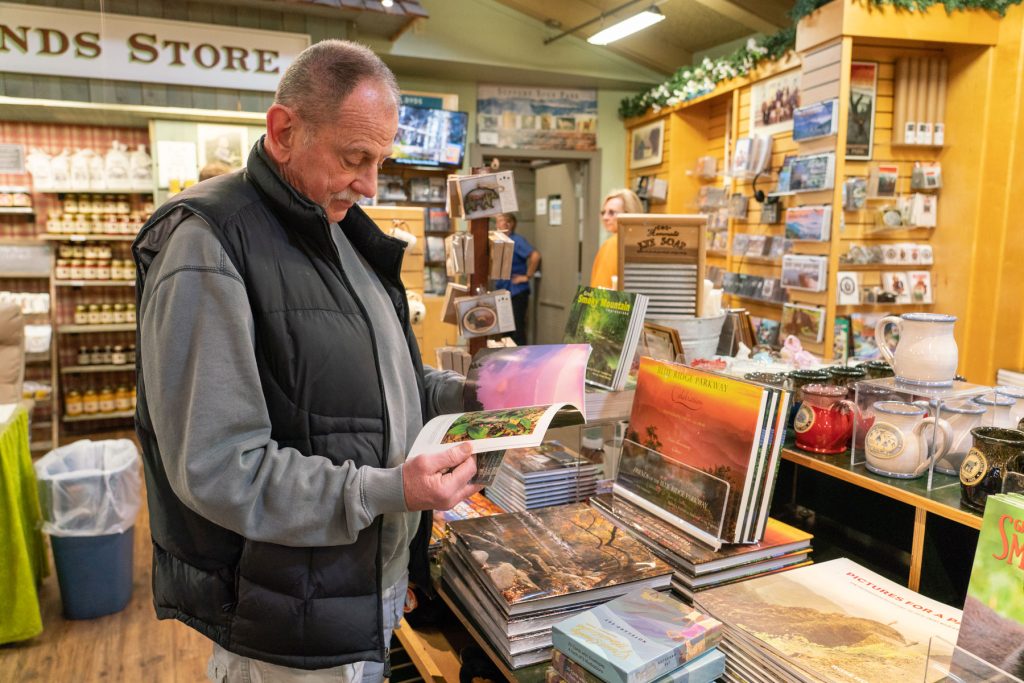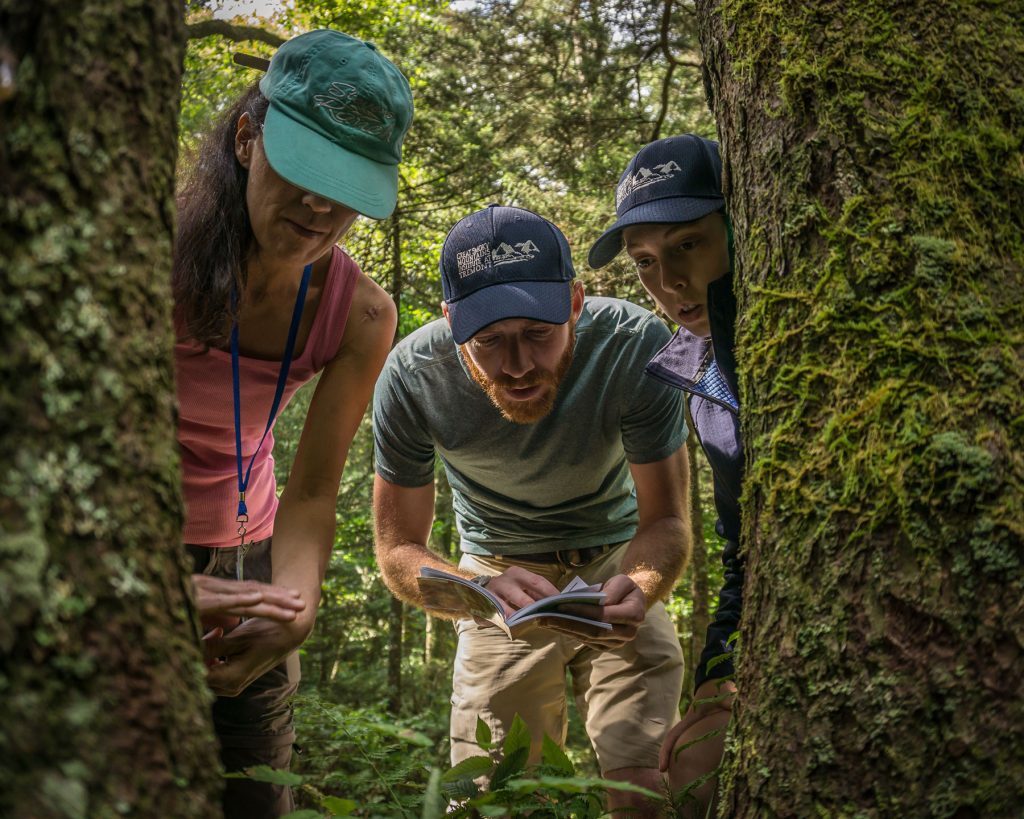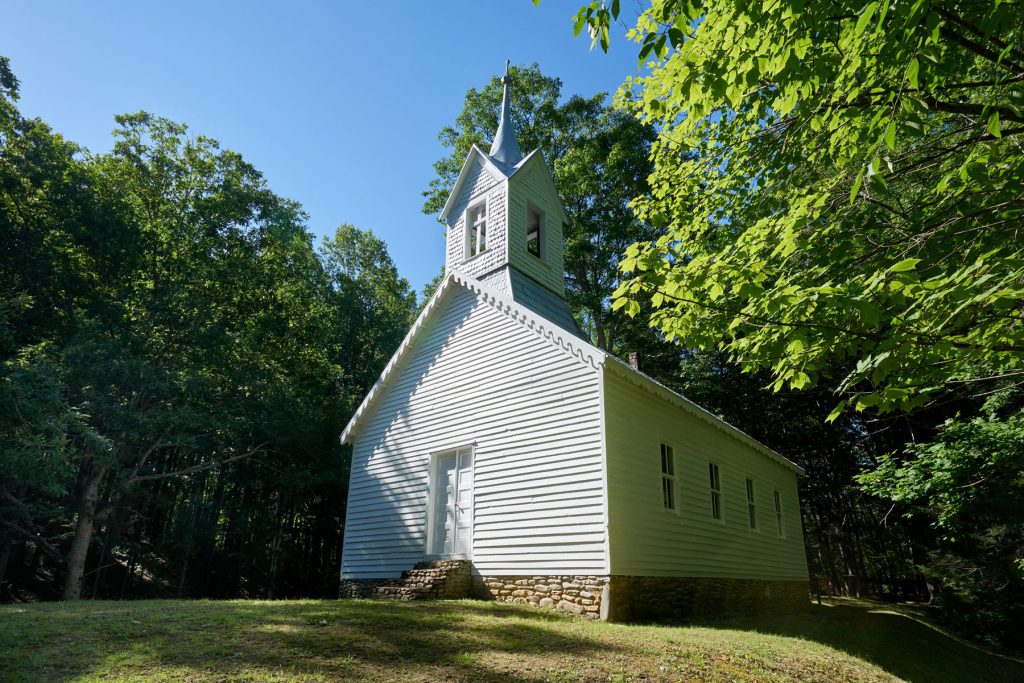
By Valerie Polk
Great Smoky Mountains National Park preserves more than 500,000 acres of treasured mountain landscape and roughly 2,900 miles of rivers and streams, all habitat for thousands of species of plants, animals, fungi, and more. In the midst of this impressive biodiversity are nearly 850 miles of trails and numerous iconic landmarks that regularly draw more than 12 million visitors each year—and a record of 14.1 million visits in 2021.

The National Park Service is charged with protecting and preserving this abundant and much beloved place, but thankfully it is not alone in its mission. It relies on four primary nonprofit partners to serve a growing number of visitors and care for a vast and varied park.
In describing Great Smoky Mountains Association’s role as one of these partners, GSMA CEO Laurel Rematore recalled a quote attributed to writer Freeman Tilden, whose work shaped the field of interpretation in national parks: “Through interpretation, understanding; through understanding, appreciation; through appreciation, protection.”
“To me,” said Rematore, “that means that as human beings, we instinctively protect what we care about. GSMA is in the business of helping visitors to better understand the cultural and natural resources found in this park so that they will be inspired to care about and become stewards of this land.”

GSMA has been working side-by-side with the National Park Service since 1953 and has given more than $47 million in support to the park in that time. It supports NPS educational, scientific, and historical preservation efforts by operating official bookstores inside the park and in gateway communities, publishing books and other media featuring cultural and natural resources, providing monetary support for park programs, and building an informed constituency of individuals and businesses that care about the park as part of an extensive membership program.
GSMA engages readers in park stories and gives voice to important topics through its publications—which include the new Fishes of the Smokies field guide, the chapter book A Search for Safe Passage, the 2022 Firefly-themed wall calendar, and the award-winning Smokies Life biannual journal—and with its Smokies LIVE blog and Sepia Tones: Exploring Black Appalachian Music podcast. It also collaborates with the park on projects like the Smokies Smart initiative, an effort to promote visitor safety through education. As part of this project, GSMA-operated bookstores feature Smokies Smart hiking essentials, like backpacks and water bottles, to help hikers prepare for outdoor activities.
“We do not do this work alone,” Rematore said. “It takes a village of partners to meet the needs of millions of park visitors each year.”
Another educational partner, Great Smoky Mountains Institute at Tremont has been inspiring learning and curiosity for more than 50 years through its student and adult programs, workshops, and camps.
“While some visitors spend only minutes or a few hours outside their car exploring, we bring people into the park for days on end,” said Catey McClary, GSMIT President and CEO. “We encourage and invite them to take the time to get to know the plants, the streams, and the critters that make up the ecosystem that the park service works so hard to protect, fostering lifelong learners that will be both current and future stewards of our beloved Smokies.”
GSMIT staffers witness first-hand the positive effects nature has on their campers and program participants, a fact that has become even more significant during a global pandemic that has drawn people outdoors and into the park in record numbers.

Friends of the Smokies is the park’s philanthropic partner. Since its founding in 1993, FOTS has provided more than $75 million through the individuals, businesses, and foundations that donate. The organization now supports some 70 park projects annually and recently made a 20-year agreement to continue its commitment to funding trail restoration, environmental education programming, wildlife research, hemlock treatment, and other projects that might not be achieved without this assistance.
A successful NPS/FOTS partnership, Trails Forever supports the work of skilled trail crews to restore and rehabilitate trails, improving safety and sustainability for years to come. A new program recently introduced by FOTS called Forever Places will support a permanently funded historic preservation crew with an endowment goal of $9 million.
A fourth primary park partner, Discover Life in America, is on a mission to discover, understand, and conserve biological diversity in the Smokies, positioning itself as the park’s nonprofit science arm. In 2023, DLiA will celebrate 25 years during which it has more than doubled the park’s known species—from around 9,000 to more than 21,000 species found to exist within the park’s diverse habitats. Of that number, 1,049 are completely new to science.

“You can’t protect species if you don’t know they exist,” said DLiA Executive Director Todd Witcher, “so the first step is the discovery, but we also have to determine species rarity and their roles in the ecosystem, and how that changes over time, so the park can better manage this unique space—a globally disappearing temperate rainforest. We’ve accomplished loads, but there is much more work to do here—and everywhere—when it comes to biodiversity conservation.”
DLiA’s newest initiative, Smokies Most Wanted, calls on the public to submit observations of lifeforms in the park through a simple phone app called iNaturalist and has already achieved more than 80 new park records.
These four nonprofit partner organizations work together with the National Park Service to ensure they are supporting the park in a complementary fashion, and there are enough unmet needs to go around.
“There’s an old adage that says, ‘No one person can do everything, but everybody can do something.’ That’s how I feel about the support and collaboration that the park receives from its four primary partners: Great Smoky Mountains Association, Friends of the Smokies, Great Smoky Mountains Institute at Tremont, and Discover Life in America,” said Superintendent Cassius Cash. “It takes all of their combined missions working together to meet the needs of today’s visitors as we usher in the next generation of users, supporters, advocates…and even employees for the next century.”
Valerie Polk is a videographer and publications associate for Great Smoky Mountains Association. Reach her at valerie@gsmassoc.org
Subscribe to get the latest posts sent to your email.
The Great Smokies Welcome Center is located on U.S. 321 in Townsend, TN, 2 miles from the west entrance to Great Smoky Mountains National Park. Visitors can get information about things to see and do in and around the national park and shop from a wide selection of books, gifts, and other Smokies merchandise. Daily, weekly, and annual parking tags for the national park are also available.